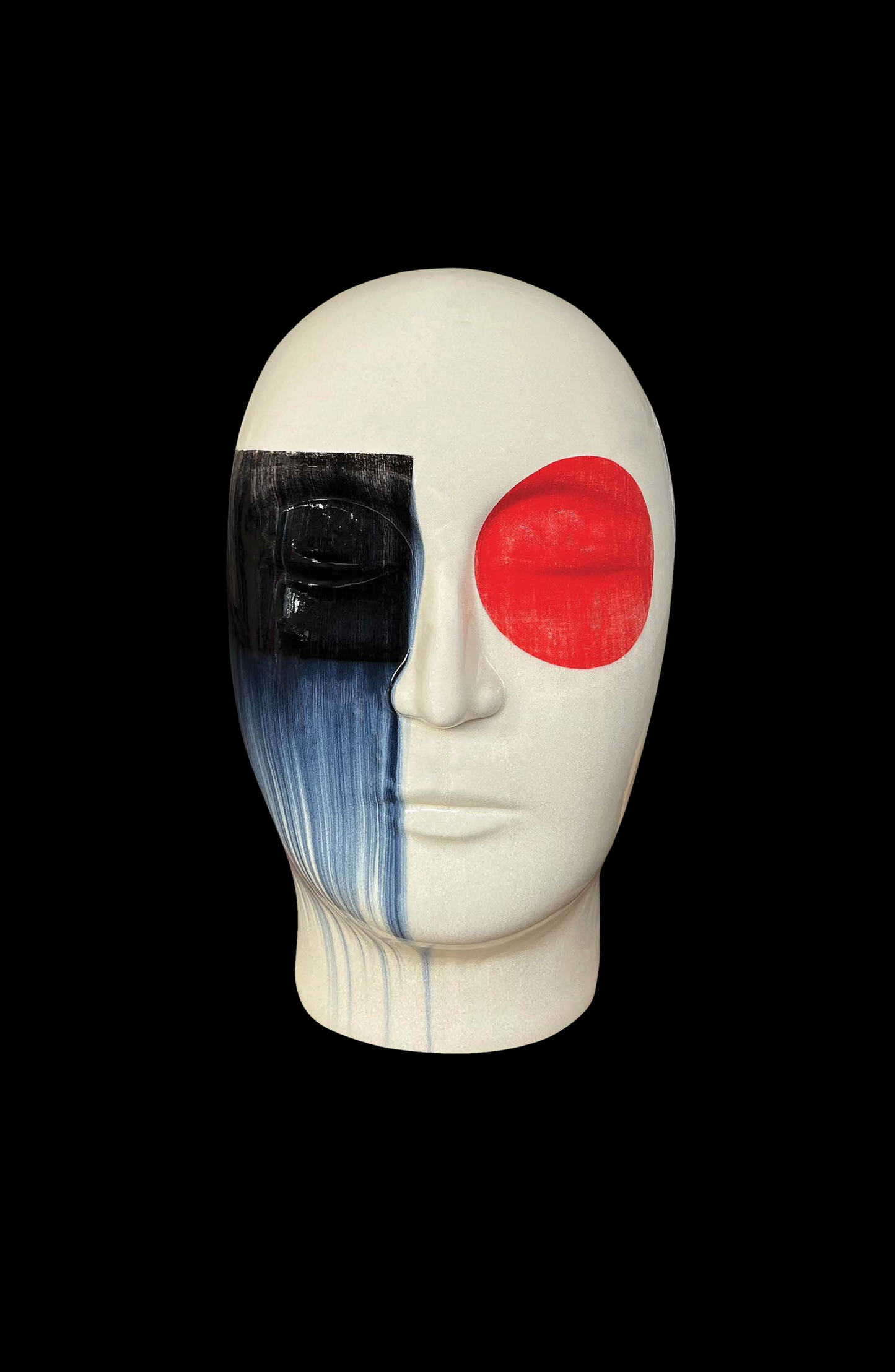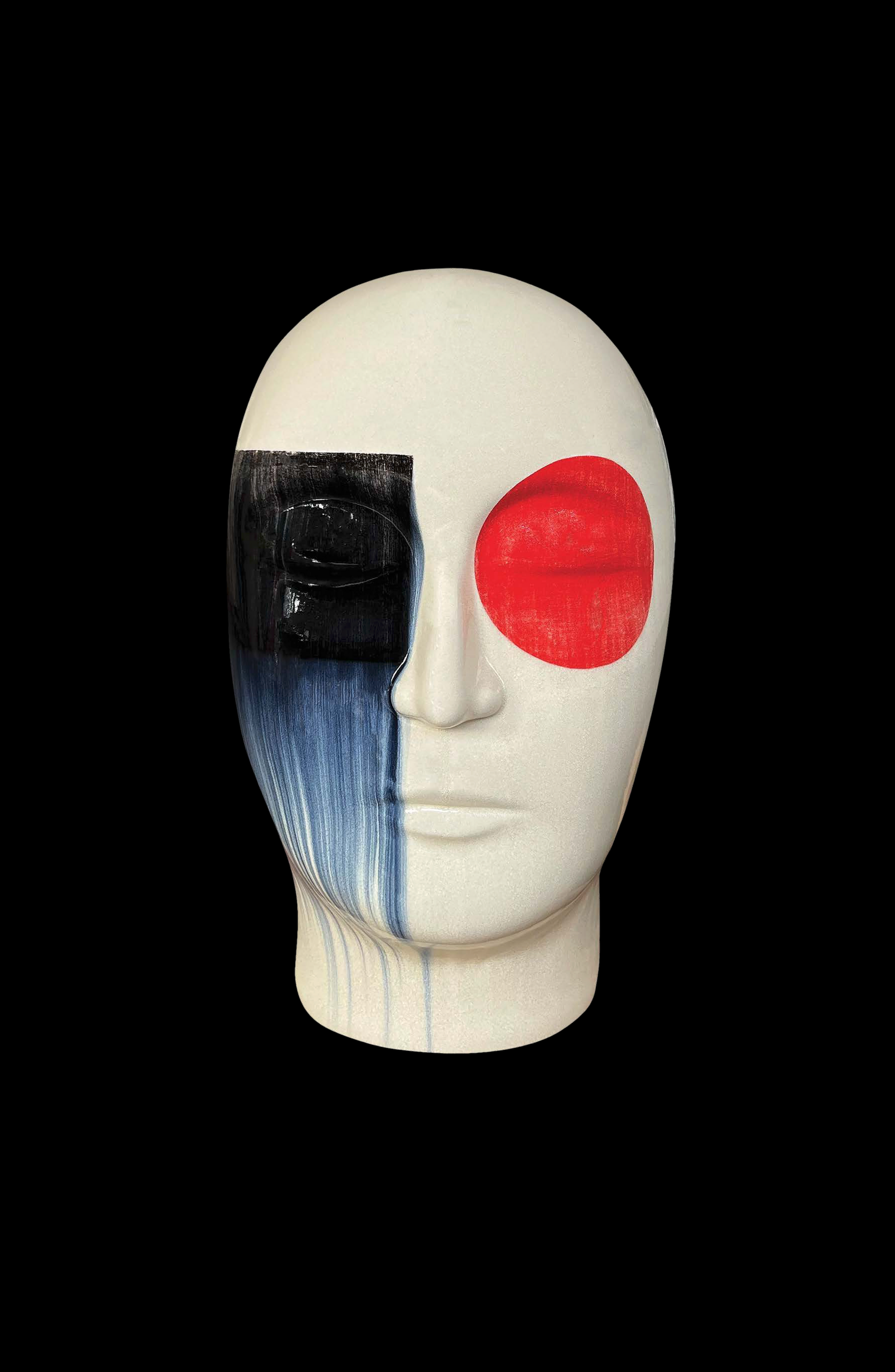Sculptures
Sculptures
Commissioned by the Omaha Symphony in consortium with the Oregon Symphony and Music Academy of the West, with generous funding provided by the Holland Foundation, Polina & Bob Schlott, and Martha & David Slosburg. Ankush Kumar Bahl, Music Director
Dedicated to Ree & Jun Kaneko and the Omaha Symphony
Listen
Listen
Program Notes
Program Notes
Attempting to musically catalog the breadth of artist Jun Kaneko’s work might have been Sisyphean in scope. As composer Andy Akiho began writing, however, certain pieces and processes sifted out, ultimately making Sculptures a showcase of ideas that are uniquely Kaneko’s own. First, as art historian Glen R. Brown writes, “his interest to repeat the same idea in a different material to see how it looked.” Second, specific material choices that create inherent relationships between the piece and the viewer. Third, space itself, in all its meanings, or ma: where questions of inches – whether in relation to another sculpture, the viewer, the density of the work, a pattern, or a form – create ripples of consequence.
Sculptures is a collection of nine compositions, alternating between full-orchestra, percussion, digital, and in one case, the symphony brass section. Some of the compositions reference particular art works by Kaneko; others, whole swaths of the artist’s output. In addition to constant support from Ree and Jun Kaneko and access to Kaneko’s work in Omaha and Portland, Oregon, Glen R. Brown’s Jun Kaneko: The Space Between was integral to the composer’s process and these notes.
Sculptures begins with Translucent, referring to Kaneko’s transformation of previous ceramics and clay pieces to new iterations in glass. Akiho was inspired by Kaneko’s 1996 Between Light & Shadow and 1981’s Parallel Sound, both re-born in 2001 at the Bullseye Glass studio in Portland. Brown writes, “glass conjures a synthesis of being and nothingness; material and consciousness a tangibility and a pure energy that seems to linger in place with the pale gleam of water or the hard brilliance of a crystalline flame without ever surrendering itself to the confirmation of touch.”
Bronze I and Bronze II – set as the second and penultimate tracks – are performed on one of Kaneko’s 2015 Untitled cast bronze and stainless steel Heads. Kaneko created his Heads in pairs deliberately, with the experience of viewing them together equally as important as taking in each individual Head. Brown writes, “Distance is equally and simultaneously part of the whole: a change to any element, whether pictorial, material, or spatial, necessarily alters the balance that unites them all.” Unlike their ceramic, glazed predecessors, the bronze Heads are left in a raw-metal state, with finishes that change as the viewer moves around them. The 2015 pair features keys that Akiho and the Omaha Symphony percussion section play, letting the Head sing, groan, growl, and hum.
Petroglyph, for brass, refers to three of Kaneko’s earliest works – all Untitled, from 1963, done in oil paint and sand on canvas. The 3D texture created alludes to future uses of glazes and constructed shapes upon shapes, despite the works’ home on canvas.
Cylinders is an immediate intersection of the composer’s background meeting the artist’s work. Akiho, a steel-pannist and percussionist, found Kaneko’s Cylinders to each carry a different pitch, and composed for soloist accordingly.
Kintsugi, written for full orchestra, is the Japanese traditional art of repairing precious ceramics with cashew lacquer and gold. Rather than hiding brokenness or mistakes, kintsugi brings those elements to the eye immediately, becoming a prominent feature. Kaneko selectively uses this technique in his ceramic work.
Ma is a Shinto concept that Kaneko integrates into all of his work. Shot in one of Kaneko’s warehouses, Ma features Akiho and strives to showcase the philosophy in both its tangible and intangible nature: the constant awareness of space between creation and viewer, how the piece interacts with everything around it, and even the idea of when, how, and why the viewer and piece are in the same space together.
Density, composed for orchestra, references these solid glazed ceramics of spiritual scale, that fit in your hand or weigh thousands of pounds, and feature bold patterns that stretch away from the viewer, an added element of spatial weight. Akiho uses long, growing tones in the strings for this piece, with patterned elements breaking out in other sections.
Whereas Bronze I features the Head being played with bows, Bronze II is percussive, a variety of striking elements causing the Head to resonate in explosive ways.
Kaneko’s largest works are his Dangos, referenced in Akiho’s orchestral finale, in that SPACE, at that TIME. Brown writes, “Each [Dango] is an island in space but also an element of an archipelago: unique and self-sufficient but reflecting implicit kinship with others that have come before and more that are yet to be.” The first large Dangos are the product of Kaneko coming to Omaha in the mid-1980s, at the invitation of then Ree Schonlau, and realizing that he could construct large, closed sculptures that often towered over the creator but still provided stillness, intimacy, and calm. When struck, Akiho found that each carries a unique voice but return to silence almost immediately. He worked to capture his initial, overwhelmed reaction to the pieces, akin to walking amidst calm giants. Ultimately, in that SPACE, at that TIME is about one’s experience and Kaneko’s artistic core: the ma created by being with these works, in their space, at the time given.
- Dani Meier
To rent a score and full set of parts, please submit a rental inquiry. Or, purchase study scores and/or parts below:
Couldn't load pickup availability


